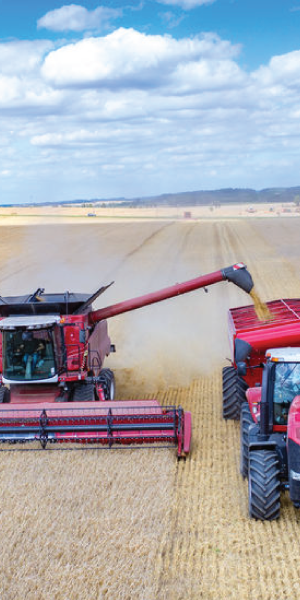As any farmer knows, there’s a good deal of tools you need or don’t need. In this article, we’ll be covering vehicles, specifically. Since the range is incredibly large, we can’t satisfy every need, but we’re happy to do our best to tackle it. Let’s get started – and remember, MidSouth Auctions and Appraisals is dedicated to accuracy without compromising quality. Vehicles represent some of the largest investments one can make in farming, and therefore accuracy is paramount.
Tractors
Trucks are one of the staples of farm life. We’d say that tractors are next up – they’re downright ubiquitous, come in a substantial range of sizes, and calling the tractor category anything resembling broad is always an understatement. They also feature enough attachment possibilities to fill a store with. The first and foremost thing a tractor is designed for? Pulling – usually, that’s farm equipment, you can use it to get things unstuck, too. Unsurprisingly, if you’re looking to farm, purchasing a tractor (should) always be on your list. There are multiple types of tractors; we’ll cover some here.
Compact tractors (as one would expect, given the name) are small but high-powered, able to assist with any and all basic farm work. Compact tractors are ideal for material handling and working in tight spaces, where a typically-sized tractor may have trouble navigating.
Wheeled tractors are the general-purpose tractor for all manner of farm work. They can be outfitted for more specific tasks, and are capable of meeting a variety of demands. The “classic” or “typical” tractor that many people think of.
Track tractors are one of those things that aren’t on the list of things most people think upon hearing the word “tractor”. Outfitted with rubber tracks instead of wheels, track tractors can plow fields with more power while simultaneously providing a smoother ride for their operator(s).
And then there are orchard tractors: these are specially adapted to work in orchards. They’re slender and can fit more easily between lines of trees, but retain the power needed to do landscaping and maintenance.
Combine, Harvester, Or Combine Harvester?
These three terms actually refer to the same vehicle, used by grain farmers. Even small-scale farming benefits from having one. Combines are quite large, with complicated internal mechanisms to turn harvested cereal crops into ready-to-use grain. Three primary processes are used in this endeavor, detailed below.
First, reaping is done. This is the process of cutting the yet-to-be-harvested grain, grabbing the raw, newly-cut grain to be further processed.
Then come threshing: separating the edible parts of the newly-cut grain from the inedible parts. This is accomplished by a drum, which beats the newly-cut grain to separate the grains from their stalks.
Finally there’s winnowing, which has no separate space of its own. Winnowing works via sieves: the threshed grain is separated from the chaff (the inedible bits) via the aforementioned sieves while the grain is still in the threshing drum.
Like tractors, combines and their attachments are extremely diverse.
Here at MidSouth Auctions and Appraisals, we couldn’t be happier than to appraise your farm equipment reliably. Farmers like you sustain the world, and we’re committed to sustaining your farming with a reliable appraisal without compromising quality. MidSouth Auctions and Appraisals. Call today.



Leave a Reply